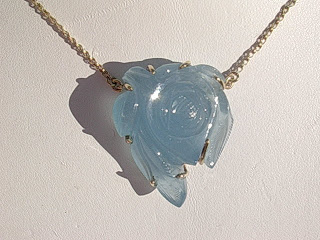
A standard homeowner’s policy will provide a limited amount of coverage up to a specified dollar amount as stated in your homeowner’s policy. Some losses may not be covered and that is why it is advisable to purchase additional coverage, also known as a floater.
When purchasing the extra floater insurance, an updated appraisal certificate and pictures of your jewelry will be required so the insurance company has them on file. The floater would cover those pieces if they would be lost, stolen, or in some cases, if you lose a stone, they would be covered under this policy.
It is very important that your jewelry is appraised by a certified appraiser. An appraisal certificate will outline all the details of the item, i.e. size of stone, karat of gold, weight, type of metal, unique features, current market value. It is also recommended to have the appraised pieces updated every 2-3 years because of the fluctuations in the gold market.
Imagine owning piece a piece of jewelry that was appraised several years ago with a replacement value of $2,000.00. Years pass and the value has increased to $4,500.00
Now if that piece is lost or stolen, and the appraisal is not current, the replacement value will be based on the $2,000.00 value.
Insurance companies have their preferred jewelers, also know as their preferred vendors and will indemnify you to your exact state before your loss. So for example, your 1kt VS1 diamond will be replaced with a 1kt VS1 diamond.
If your ring was insured for $6,500.00, and the insurance company can have it replaced for $5,500, you have the option to have their jeweler replace your ring or you could choose to have your own jeweler replace your piece. In the latter case, the insurance company would pay you out, also known as cash-out on the actual value—in this case you would receive $5,500—less your deductible, if applicable.
With regard to antique jewelry, which would be difficult to replace, the appraisal certificate would provide all the details and it would be based on the replacement value. You would receive a cash settlement.
Please note, this is a very GENERAL OVERVIEW and may not apply to your own specific insurer. I strongly recommend that you contact your individual agent to determine your insurance company’s specific policies with regards to insuring jewelry.


















